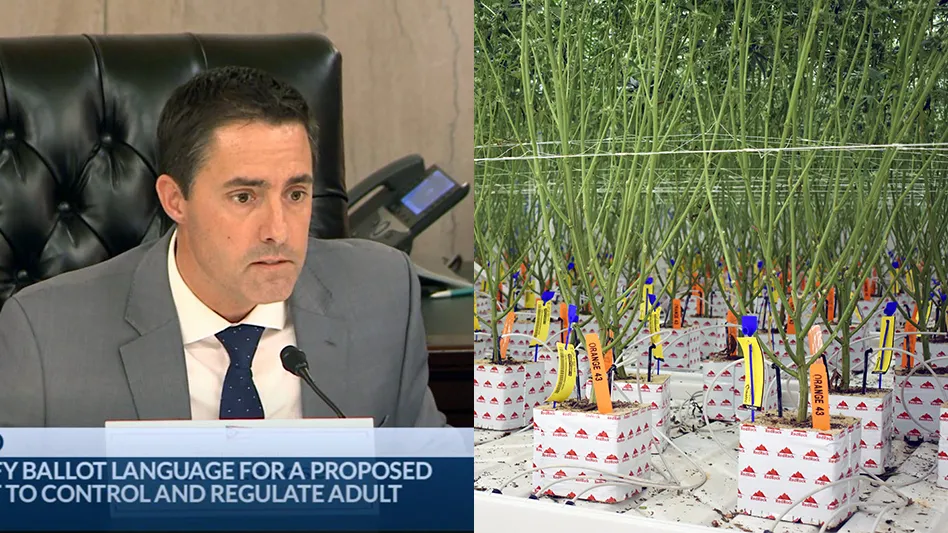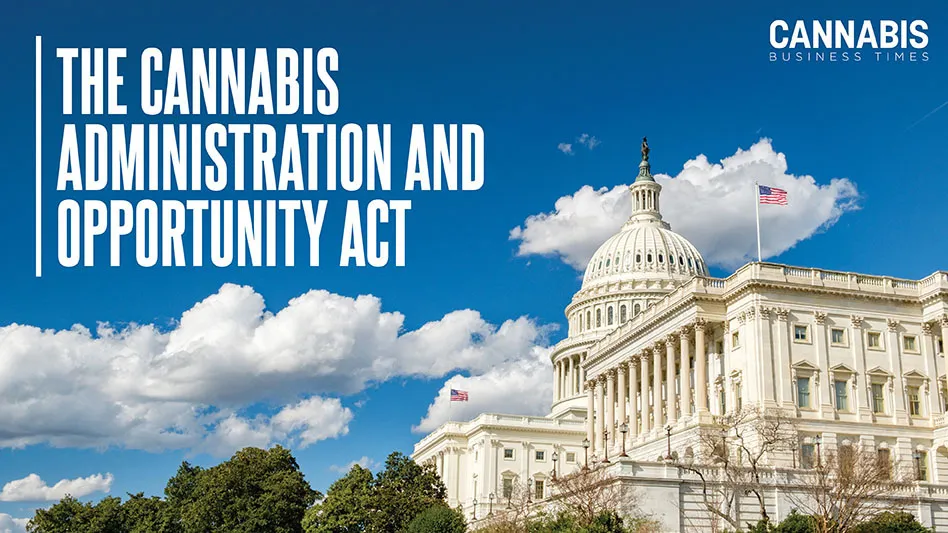
The Ohio Channel; Cannabis Business Times
Ohioans officially have the opportunity to make their state the 24th in the nation to legalize adult-use cannabis after state officials approved ballot language Thursday for a proposal that will go before voters this November.
The Ohio Ballot Board members, which include Republican Secretary of State Frank LaRose, as well as two Republicans and two Democrats appointed by each chamber of the state Legislature, voted 5-0 during their Aug. 24 meeting to certify a ballot summary for what will appear as State Issue 2 in the general election.
LaRose said his office prepared the draft language the previous day (see ballot language below). A public comment period was offered during the meeting, but no testifiers stepped forward. In addition, board members did not discuss the drafted text before voting unanimously to adopt it.
This support comes after advocates came up 679 short of the roughly 124,000 valid signatures they needed before submitting the extra signatures to cross that threshold during a 10-day grace period earlier this month.
RELATED: Ohio Legalization Group Submits 6,545 More Signatures, Nearly 10x What’s Needed for Ballot
The legalization initiative, “An Act to Control and Regulate Adult Use Cannabis,” is a statutory measure that now needs a simple 50%-plus-one majority to pass on Nov. 7. Notably, the proposal would allow Ohioans 21 years and older to purchase and possess up to 2.5 ounces of cannabis or 15 grams of extract from licensed dispensaries (what’s allowed in public) and grow up to six plants per person or 12 plants per household (what’s allowed in private).
In addition, the proposal aims to impose a 10% tax on cannabis sales, with 3% of revenue going toward state costs to run a legalized program; 25% toward education, substance abuse and addiction treatment programs; 36% supporting municipalities with dispensaries; and 36% toward supporting social equity and jobs programs.
Tom Haren, an Ohio attorney and spokesman for the Coalition to Regulate Marijuana Like Alcohol, which sponsored the initiative, said in a public statement that Thursday’s unanimous approval by the bipartisan ballot board should “assure voters that ‘What they see is what they’ll get.’”
As neighboring Michigan—a state of roughly 10 million people compared to Ohio’s 11.7 million people—is on pace to record roughly $3 billion in legal cannabis sales this year, university researchers at the Ohio State University’s Drug Enforcement and Policy Center projected earlier this month that a legalized market in the Buckeye State would generate between $276 million and $403 million in annual tax revenue by the fifth year of commercial cannabis operations.
“Though our estimates are based on the tax structure proposed in the citizen-initiated statute, Ohio legislators could pursue another tax structure which could significantly impact actual tax revenues collected,” OSU researchers wrote in the August paper published by the Social Science Research Center.
“Whatever tax structure is adopted, our analysis suggests it is reasonable to predict that Ohio would collect hundreds of millions in annual cannabis tax revenues from a mature adult-use cannabis market,” according to the researchers.
Although cannabis reform advocates throughout the nation often stress the potential tax revenues to be raised through legalized markets, the revenue collected in Ohio would likely be less than 1% of the state’s $60-plus billion annual budget. However, what this potential cannabis tax revenue would fund in Ohio is a key indicator of what the program could look like.
As noted above, more than one-third of the potential $403 million in cannabis tax revenues in a mature Ohio market would go toward social equity and jobs programs.
“Our proposal has robust social equity provisions which, in addition to the $100-plus million annual investment in social equity from adult-use tax revenue, includes the issuance of 40 new social equity cultivation licenses and 50 new social equity dispensary license over and above those issued to current medical license holders,” Haren told Cannabis Business Times.
While the state’s existing medical operators—including 37 cultivators and 101 certified retailers—would be grandfathered into an adult-use cannabis market and have first-mover advantage under the November ballot proposal, the proposed statute requires the additional 90 licenses in these two categories to be issued “with a preference to applications who are participants under the cannabis social equity and jobs program.”
The statute would also authorize a Division of Cannabis Control—to be established within the Department of Commerce—to issue additional adult-use cannabis licenses 24 months after the first adult-use operator license is issued.
“It’s important that the [initial] social equity licensees have enough time to get up and running before the division issues more licenses, hence the 24-month waiting period,” Haren said. “After that, the division has total discretion to issue more licenses (there are no hard license caps in our proposal).”
While Haren projects it will take the social equity licensees between 18 and 24 months to get their businesses stood up, this timeline has largely been a best-case scenario in other states that have recently launched adult-use programs. From licensing processes getting delayed by litigation to awardees struggling to raise capital or navigate local ordinances, myriad factors contribute to less-than-equitable opportunities in new markets.
In New Jersey, 40 adult-use dispensaries have opened since commercial sales first launched in April 2022, and 31 of these retail facilities are run by existing medical operators despite more than 1,000 applicants having submitted their paperwork as aspiring adult-use retail entrepreneurs.
And in New York, only 23 of 463 social equity retail licenses have launched their dispensing operations nine months after commercial adult-use sales first launched and nearly 2 1/2 years since former Gov. Andrew Cuomo signed legislation for the program, in which state regulators now find themselves in a legal battle over their licensing process.
And these two programs have taken drastically different approaches: New Jersey commenced its adult-use retail market with seven of the largest publicly traded companies in the industry that served the state’s medical market, while New York regulators are blocking their state’s existing medical cannabis operators from entering the state’s adult-use market for at least one year.
In Ohio, a forthcoming Division of Cannabis Control under the legalization proposal would be able to evaluate market dynamics “quickly” after 24 months and issue more licenses if appropriate for the market, Haren said.
“As a result, we’ll end up with a diverse program featuring many new Ohio-owned and operated small businesses,” he said.
But should Ohioans back this statutory measure at the polls in November, the question remains: Will state lawmakers honor the intentions of the proposal when they write legislation to codify a state program thereafter?
Ohio Cannabis Ballot Language for State Issue 2 by Tony Lange on Scribd
Latest from Cannabis Business Times
- Aurora Marks 1st Medical Cannabis Shipment to New Zealand Market
- Where All 100 US Senators Stand on SAFER Banking Act
- Blumenauer Unveils Legislative Blueprint, Additional Administrative Action Needed Following Rescheduling
- Cannabis Rescheduling FAQ: What Now?
- From Custodian to Cultivation Supervisor
- California City in Cannabis Retail Desert Welcomes 1st Dispensary
- US Senate Democrats Forgo Addressing Intoxicating Hemp in 2024 Farm Bill Summary
- Verano Opens 3rd Connecticut Social Equity Joint Venture Dispensary





